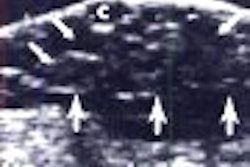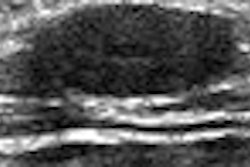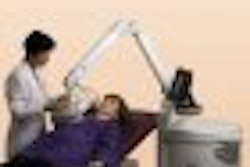Several studies released at this week's American Society of Echocardiography (ASE) meeting show that ultrasound is helpful in detecting various forms of cardiac disease.
In one study, stress echocardiography was found to be a more accurate method of identifying women at highest risk for coronary artery disease (CAD) than traditional stress testing and clinical risk factors.
Researchers from St. Luke's-Roosevelt Hospital Center in New York City concluded that stress echocardiography can stratify women at the highest risk of CAD with those that are at risk of having a heart attack or cardiac death. This process allows women to receive more focused and appropriate treatment that is customized to their specific risk level and outcomes, they stated.
A study from the University of Nebraska Medical Center in Omaha found that real-time perfusion echocardiography helped identify asymptomatic diabetics who are at risk for CAD.
Being able to assess the blood flow within the heart muscle by using a contrast agent, in addition to defining abnormalities, would be a breakthrough for diagnosis and treatment of heart diseases, according to the researchers.
In a third study, contrast echocardiography can be used to separate patients presenting with low-risk and nonlife-threatening chest pain from those who may be experiencing a heart attack. The research shows that myocardial contrast echocardiography (MCE) may more accurately diagnose life-threatening heart disease, decrease unnecessary hospital admissions, and reduce patient cost.
U.S. Food and Drug Administration approval is pending for the use of these contrast agents to evaluate blood flow in the heart muscle.
Finally, screening vascular ultrasound (SVU) is effective in identifying patients with cardiovascular disease before they show symptoms and become ill.
The study from Columbia University in New York City evaluated 398 patients, using both Framingham risk score (FRS) and SVU. Of the 398 patients, SVU found 171 patients to have plaque buildup in the arteries of the neck and thigh. Of those 171 who were found to have plaque buildup, 25% of men and 35% of women were categorized as low risk by FRS.
By AuntMinnie.com staff writers
June 15, 2007
Related Reading
Noninvasive tests useful in diagnosing intracranial arterial stenosis, June 13, 2007
CMS adds to cardiac ultrasound coverage, May 23, 2007
Contrast media add valuable information in US applications, May 4, 2007
New ultrasound technique predicts wall motion recovery after AMI, April 25, 2007
Doppler echo indicates postinfarction myocardial viability, April 19, 2007
Copyright © 2007 AuntMinnie.com



















